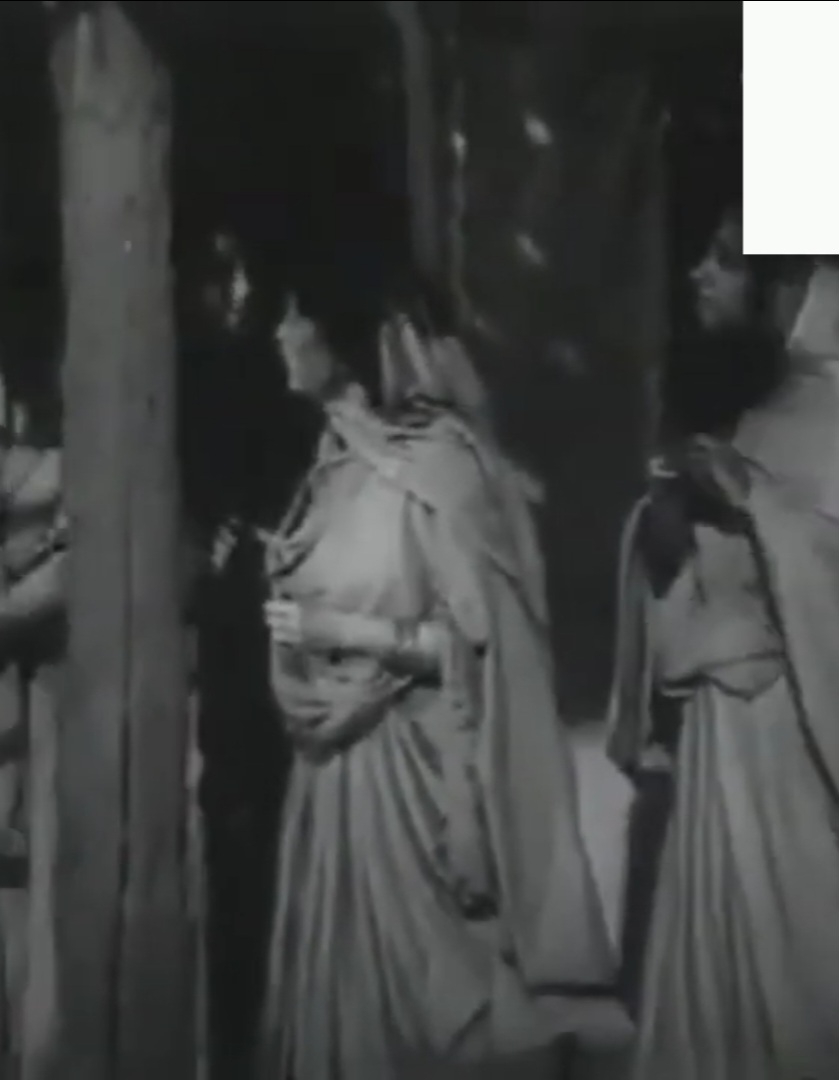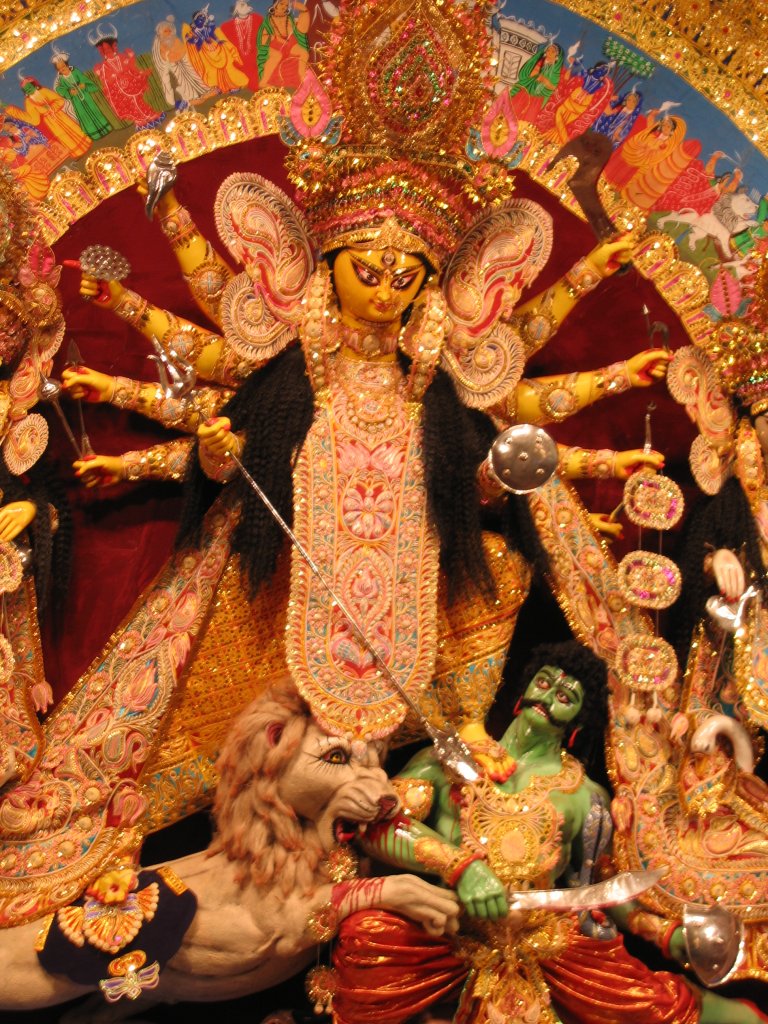|
Culture Of Mithila Region
Mithila culture or Maithil culture refers to the culture which originated in the Mithila region of the Indian subcontinent. Mithila comprises Tirhut, Darbhanga, Kosi, Purnia, Munger, Bhagalpur and Santhal Pargana divisions of India and adjoining provinces of Province No. 1, Bagmati Pradesh, and Madhesh Province of Nepal. Men and women in Mithila are very religious and dress for the festivals as well. The costumes of Mithila stem from the rich traditional culture of Mithila. Maithil Kurta tied from left side with a (Dori)string and Dhoti with a Mithila Painting bordered Maroon coloured Gamchha which is the Symbol of Passion, Love, Bravery and Courage are common clothing items for men. Men wear Gold Baali in their nose which symbolizes prosperity, happiness and wealth inspired by Lord Vishnu. Also wear Balla on their wrist and Mithila Paag on their Head. In ancient times there was no colour option in Mithila, so the Maithil women wore white or yellow Saree with red Border but ... [...More Info...] [...Related Items...] OR: [Wikipedia] [Google] [Baidu] |
Culture
Culture ( ) is a concept that encompasses the social behavior, institutions, and Social norm, norms found in human societies, as well as the knowledge, beliefs, arts, laws, Social norm, customs, capabilities, Attitude (psychology), attitudes, and habits of the individuals in these groups.Tylor, Edward. (1871). ''Primitive Culture''. Vol 1. New York: J. P. Putnam's Son Culture often originates from or is attributed to a specific region or location. Humans acquire culture through the learning processes of enculturation and socialization, which is shown by the diversity of cultures across societies. A cultural norm codifies acceptable conduct in society; it serves as a guideline for behavior, dress, language, and demeanor in a situation, which serves as a template for expectations in a social group. Accepting only a monoculturalism, monoculture in a social group can bear risks, just as a single species can wither in the face of environmental change, for lack of functional respo ... [...More Info...] [...Related Items...] OR: [Wikipedia] [Google] [Baidu] |
Gamucha
Gamcha (or Gamchhā, Gāmchhā, Gāmuchhā (Odia), Gamusā (Assamese) and Angochha) is a rectangular piece of traditional coarse cotton cloth, sometimes with a checked design, worn as traditional scarf by men in the Indian subcontinent, mainly in Eastern India (including Assam), Bangladesh, as well as in eastern Terai of Nepal.. It also became bit popular in other cultures of India and now in what is known as Pakistan after the Indian partition, as well as various parts of South and Southeast Asia. The word "Gamcha" is Bengali/ Assamese word which comes from two very simple and commonly used Bengali/ Assamese words, (গা) ''ga'' which means "Body", and (মুছা) ''mucha'' which means "wipe". Literally translated, it means 'something to wipe the body with' however, interpreting the word ''gamcha'' as the towel is misleading. It is often worn on one side of the shoulder. Its appearance varies from region to region, and it has been traditionally worn as a scarf by the Od ... [...More Info...] [...Related Items...] OR: [Wikipedia] [Google] [Baidu] |
Darbhanga
Darbhanga is the fifth largest city and municipal corporation in the state of Bihar in India, and is considered an important city in North Bihar. It serves as the headquarters of the Darbhanga district and the Darbhanga division. Darbhanga is also referred to as the ''gateway to Bengal'', because it is held that the name Darbhanga has been derived from ''Dwār Banga'' or ''Dari – Banga'', meaning the 'door of Bengal'. Darbhanga was the seat of the erstwhile Khandwala zamidaar dynasty under the Mughals and British India. It is considered an important medical centre of North Bihar as it is the location of the Darbhanga Medical College and Hospital, and the second AIIMS of Bihar i.e AIIMS Darbhanga is to be constructed here. Similarly by the end of year 2029, it is expected that the city will be equipped with modern infrastructure of metro railway services called as Darbhanga Metro having 18.8 kilometres long metro line with 18 metro stations on it. Darbhanga is one of ... [...More Info...] [...Related Items...] OR: [Wikipedia] [Google] [Baidu] |
The Times Of India
''The Times of India'' (''TOI'') is an Indian English-language daily newspaper and digital news media owned and managed by the Times Group. It is the List of newspapers in India by circulation, third-largest newspaper in India by circulation and List of newspapers by circulation, largest selling English-language daily in the world. It is the oldest English-language newspaper in India, and the second-oldest Indian newspaper still in circulation, with its first edition published in 1838. It is nicknamed as "The Old Lady of Bori Bunder", and is a newspaper of record. Near the beginning of the 20th century, Lord Curzon, the Viceroy of India, called ''TOI'' "the leading paper in Asia". In 1991, the BBC ranked ''TOI'' among the world's six best newspapers. It is owned and published by Bennett, Coleman & Co. Ltd. (BCCL), which is owned by the Sahu Jain family. In the Brand Trust Report India study 2019, ''TOI'' was rated as the most trusted English newspaper in India. In a 2021 surve ... [...More Info...] [...Related Items...] OR: [Wikipedia] [Google] [Baidu] |
Maithil
Maithils (Devanagari: मैथिल), also known as Maithili people, are an Indo-Aryan cultural and ethno-linguistic group from the Indian subcontinent, who speak the Maithili language as their native language. They inhabit the Mithila region, which comprises Northern and Eastern Bihar and Northeastern Jharkhand in India & in Nepal constituting Madhesh Province in addition to some terai districts of Bagmati and Koshi Provinces. The Mithila region forms an important part of Hinduism as it is said to be the birthplace of Sita, the wife of Ram and incarnation of Lakshmi. History Vedic period Mithila first gained prominence after being settled by Indo-Aryan speaking peoples who established the Videha kingdom. During the late Vedic period (c. 1100–500 BCE), Videha became one of the major political and cultural centers of South Asia, along with Kuru and Pañcāla. The kings of the Videha Kingdom were called Janakas. The Videha Kingdom later became incorporated int ... [...More Info...] [...Related Items...] OR: [Wikipedia] [Google] [Baidu] |
Kali Puja
Kali Puja (ISO: ), also known as Shyama Puja or Mahanisha Puja, is a festival originating from the Indian subcontinent, dedicated to the Hindu goddess Kali. It is celebrated on the new moon day (Dipannita Amavasya) of the Hindu calendar month of Ashwayuja (according to the amanta tradition) or Kartika (according to the purnimanta tradition). The festival is especially popular in the region of West Bengal, and other places like Mithila, Jharkhand Jharkhand (; ) is a States and union territories of India, state in East India, eastern India. The state shares its border with the states of West Bengal to the east, Chhattisgarh to the west, Uttar Pradesh to the northwest, Bihar to the north ..., Odisha, Assam, and Tripura, as well as the town of Titwala in Maharashtra, along with the neighbouring country of Bangladesh. History Description of Kali in Sanskrit texts during the late medieval period point to her growing popularity alongside other goddesses. She appears in the ... [...More Info...] [...Related Items...] OR: [Wikipedia] [Google] [Baidu] |
Durga Puja
Durga Puja (ISO 15919, ISO: , ), also known as Durgotsava or Shaaradotsava, is an annual festival originating in the Indian subcontinent which pays homage to the Hinduism, Hindu goddess Durga, and is also celebrated because of Durga's victory over Mahishasura. It is the biggest festival of Bengali Hindus and the Indian state of West Bengal. Durga Puja in Kolkata, Durga Puja as celebrated in Kolkata, West Bengal's capital city, was inscribed on the UNESCO Intangible Cultural Heritage Lists, intangible cultural heritage list of UNESCO in December 2021. In addition to West Bengal, Hindu Bengalis are native to Bangladesh and Indian state of Tripura, Barak Valley, Assam (Barak Valley), Jharkhand and Kosi-Seemanchal, Bihar (Kosi-Seemanchal); Therefore, Durga Puja is performed with great devotion in these places as well. The festival is observed in the Indian calendar in the month of Ashwin, Ashvin, which corresponds to September–October in the Gregorian calendar. Durga Puja is ... [...More Info...] [...Related Items...] OR: [Wikipedia] [Google] [Baidu] |
Chhath
Chhath is an ancient Hindu festival, native to eastern India and southern Nepal. It is celebrated especially in the Indian states of Bihar, Jharkhand, and Eastern Uttar Pradesh; and Koshi, Gandaki, Bagmati, Lumbini and Madhesh provinces of Nepal. In major Indian and Nepalese urban centres like Delhi, Mumbai, Kolkata, Hyderabad, Chennai, and Kathmandu, the diaspora actively participates in celebrating Chhath, preserving their cultural heritage. The festival is also celebrated by the diaspora in countries such as the United States, Australia, Singapore, the United Arab Emirates, Canada, Mauritius, Japan, and the United Kingdom. During Chhath Puja, prayers are dedicated to the solar deity, Surya, to express gratitude for the blessings of life on Earth and to seek the fulfilment of personal wishes. The Hindu goddess Chhathi Maiya (or Chhathi Mata)—the sixth form of Prakriti and Surya's sister—is also worshipped during the festival. It is celebrated for six days aft ... [...More Info...] [...Related Items...] OR: [Wikipedia] [Google] [Baidu] |
Sita Followed Maithil Saree Style In Siya Ke Ram Series
Sita (; ), also known as Siya, Jānaki and Maithili, is a Hindu goddess and the female protagonist of the Hindu epic ''Ramayana''. Sita is the consort of Rama, the avatar of god Vishnu, and is regarded as an avatar of goddess Lakshmi. She is the chief goddess of the Ramanandi Sampradaya and is the goddess of beauty and devotion. Sita's birthday is celebrated every year on the occasion of Sita Navami. Described as the daughter of Bhūmi (the earth), Sita is brought up as the adopted daughter of King Janaka of Videha. Sita, in her youth, chooses Rama, the prince of Ayodhya (Ramayana), Ayodhya as her husband in a swayamvara. After the Sita Swayamvara, swayamvara, she accompanies her husband to his kingdom but later chooses to accompany him along with her brother-in-law Lakshmana, in his exile. While in exile, the trio settles in the Dandaka forest from where she is abducted by Ravana, the Rakshasa king of Lanka. She is imprisoned in the garden of Ashoka Vatika, in Lanka, until she ... [...More Info...] [...Related Items...] OR: [Wikipedia] [Google] [Baidu] |
Maithil Saree Style In Kanyadan (Maithili Movie)
Maithils (Devanagari: मैथिल), also known as Maithili people, are an Indo-Aryan cultural and ethno-linguistic group from the Indian subcontinent, who speak the Maithili language as their native language. They inhabit the Mithila region, which comprises Northern and Eastern Bihar and Northeastern Jharkhand in India & in Nepal constituting Madhesh Province in addition to some terai districts of Bagmati and Koshi Provinces. The Mithila region forms an important part of Hinduism as it is said to be the birthplace of Sita, the wife of Ram and incarnation of Lakshmi. History Vedic period Mithila first gained prominence after being settled by Indo-Aryan speaking peoples who established the Videha kingdom. During the late Vedic period (c. 1100–500 BCE), Videha became one of the major political and cultural centers of South Asia, along with Kuru and Pañcāla. The kings of the Videha Kingdom were called Janakas. The Videha Kingdom later became incorporated into t ... [...More Info...] [...Related Items...] OR: [Wikipedia] [Google] [Baidu] |
Durga
Durga (, ) is a major Hindu goddess, worshipped as a principal aspect of the mother goddess Mahadevi. She is associated with protection, strength, motherhood, destruction, and wars. Durga's legend centres around combating evils and demonic forces that threaten peace, prosperity, and dharma, representing the power of good over evil. Durga is believed to unleash her divine wrath against the wicked for the liberation of the oppressed, and entails destruction to empower creation. Durga is seen as a motherly figure and often depicted as a beautiful woman, riding a lion or tiger, with many arms each carrying a weapon and often defeating demons. She is widely worshipped by the followers of the goddess-centric sect, Shaktism, and has importance in other denominations like Shaivism and Vaishnavism. The most important texts of Shaktism, Devi Mahatmya and Devi Bhagavata Purana, revere Devi (the Goddess) as the primordial creator of the universe and the Brahman (ultimate truth and reali ... [...More Info...] [...Related Items...] OR: [Wikipedia] [Google] [Baidu] |







